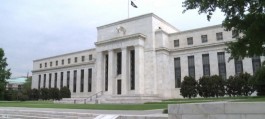US markets continued their record-breaking run as the year drew to a close, with the three major indices overcoming the hurdles of October to end the month with collective gains, boosting their year-to-date gains to double-digit levels.
The Dow Jones Industrial Average has risen by about 12% since the beginning of 2025, the Standard & Poor's 500 has climbed by more than 16%, while the Nasdaq Composite has achieved a jump of more than 22%, supported by the rise of artificial intelligence stocks, most notably Nvidia, which this week surpassed the $5 trillion mark in market value.
November... the month of seasonal optimism
November is historically the best month of the year for the Standard & Poor's 500, averaging a gain of 1.8% according to Stock Trader's Almanac data since 1950, and ranks third in performance in years following presidential elections with an increase of 1.6%.
Analysts believe that seasonal momentum could push the index above the 7,000-point mark, ahead of the average forecast of 6,555 points by the end of the year, amid declining pessimism among investors and increasing confidence among optimists in continuing the rise, according to a report and data.
Reflexivity co-founder Giuseppe Citi says: A correction will come sooner or later, but there are no signs yet that it is imminent.
Obstacles along the way
Despite the prevailing optimism, Wall Street faces a number of challenges, most notably the ongoing earnings season, the risk of the longest government shutdown in American history, and the tariffs case that will be brought before the Supreme Court on November 5.
The case concerns tariffs imposed by President Donald Trump, after he asked the Supreme Court to overturn lower court rulings that deemed several of those tariffs illegal. Trump is expected to attend the hearing, which will combine two cases related to tariffs on fentanyl and immigration, along with the so-called tit-for-tat tariffs that roiled markets last April.
Analysts believe that tariffs related to fentanyl and immigration are likely to remain in place, while reciprocal tariffs may be repealed due to their unconstitutionality. Repealing these tariffs should support stocks, particularly those of companies harmed by the tariffs, but returning the revenue to the Treasury could negatively impact the bond market, which is already burdened by the US fiscal deficit.
Raymond James policy analyst Ed Mills explains that the potential impact of the ruling will be limited, adding: Even if the court overturns the tariffs, Trump has other tools to impose new tariffs under different names, so it is a mistake to base major investment decisions on this issue.
A strong earnings season despite the uncertainty
As for the earnings season, it is currently past its midpoint with generally positive results; FactSet data indicates that the earnings of companies listed in the S&P 500 grew by more than 10% in the third quarter, led by the financial, technology and utilities sectors.
AI companies such as AMD, Palantir, and Super Micro Computer are expected to release their data next week, amid anticipation to see if their high valuations are still justified.
Government shutdown puts pressure on growth
The federal government shutdown, now in its fifth week, threatens to reduce US economic growth. According to Gregory Daco, chief economist at EY-Parthenon, the shutdown is reducing GDP by about 0.13 percentage points per week, or roughly half a point over 29 days.
However, analysts believe that the continued AI story and strong corporate results could keep the market in a constructive position until the end of the year.
Art Hogan, chief market strategist at B. Riley Wealth, said: Retail and institutional investors continue to buy on dips, and they have been right so far. The strong performance looks set to continue through to the end of 2025.


































